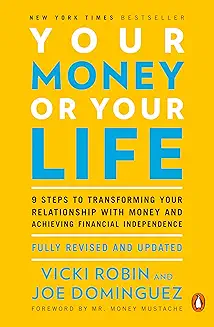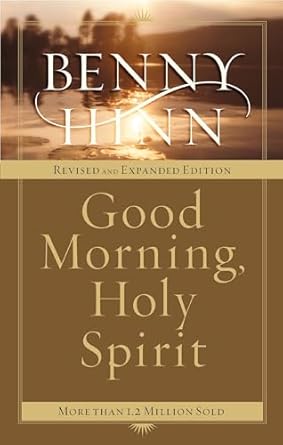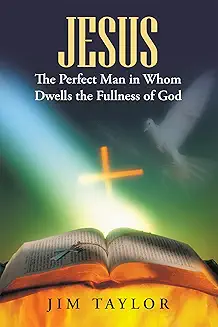A Practical Guide to Transforming Your Relationship With Money
By Vicki Robin & Joe Dominguez
In a world obsessed with earning more and spending fast, Your Money or Your Life offers a radically different perspective: what if true wealth isn’t about how much you make—but how you spend your life energy?
Written by Vicki Robin and Joe Dominguez, this financial classic has helped millions of readers worldwide rethink their relationship with money, work, and time. In this article, we’ll explore the core lessons of the book, how to apply them in modern life, and why this approach is more relevant than ever.
What Is the Central Idea?
At its heart, Your Money or Your Life asks a powerful question:
“Are you trading your life for money?”
It reframes money not just as currency—but as a representation of your time, energy, and life force. Every dollar you earn comes at the cost of hours spent working, commuting, or being stressed. If you see money through this lens, your spending habits change completely.
1. Understanding the Real Value of Money
Robin and Dominguez introduce the idea that money = life energy. So, before you buy something, ask:
- How many hours of my life did it take to earn this?
- Was it worth that much of my time?
- Could that time have been spent doing something more meaningful?
When you begin to see purchases in terms of time (not just price tags), your priorities shift. You start avoiding mindless spending and become more intentional.
2. Track Every Dollar You Spend (With Awareness)
One of the book’s core exercises is to track every single expense, every day. Not just for budgeting—but for awareness.
You’ll begin to notice:
- Where your money actually goes (often not where you thought)
- Patterns of unconscious spending
- Emotional triggers linked to purchases
This tracking creates a mirror—so you can see if your money choices align with your true values.
3. Evaluate Each Expense: Is It Bringing You Fulfillment?
The book introduces a concept of rating each expense on a scale of 1 to 10 based on how much fulfillment it brought to your life.
Some small purchases (like a meaningful gift or a great meal with friends) may rate higher than large ones (like a car or a luxury item).
This exercise helps you stop wasting money on things that don’t add value to your life—while still allowing joyful spending where it matters.
4. Calculate Your “Real” Hourly Wage
You may think you earn $20 or $30 an hour—but after subtracting taxes, commuting time, work clothes, and stress recovery, your real hourly wage could be much lower.
Once you understand your true hourly rate, you’ll be able to evaluate spending more accurately:
Is that $100 pair of shoes worth 5 hours of my life?
This simple shift builds financial consciousness.
5. Create a Wall Chart (And Watch Your Freedom Grow)
Robin and Dominguez recommend creating a monthly chart where you track:
- Total income
- Total expenses
- Investment income (passive income)
- Your progress toward financial independence
Over time, you’ll watch as your financial freedom increases, and your reliance on traditional employment decreases.
This visual habit keeps motivation high and shows that small, consistent actions can lead to big results.
6. Build Toward Financial Independence (Not Just Retirement)
The ultimate goal isn’t to retire at 65—it’s to reach a point where your passive income covers your basic expenses. That’s when you have true freedom: to work because you want to, not because you have to.
This doesn’t mean becoming rich overnight. It means:
- Reducing unnecessary expenses
- Increasing savings
- Investing wisely
- Living in alignment with your values
Freedom becomes a daily goal, not a distant dream.
7. Money and Meaning: A Deeper Philosophy
More than just tactics, this book asks big questions:
- What’s enough?
- Are you living the life you want—or just maintaining a lifestyle you’ve outgrown?
- How much of your life are you willing to trade for things you don’t need?
It’s a call to conscious living—to use money not as a goal, but as a tool to create meaning, purpose, and joy.
Is This Book Still Relevant Today?
Absolutely.
Even in the age of digital banks, crypto, and online side hustles, the principles in Your Money or Your Life are timeless. It’s not about trends—it’s about intentional living.
- You don’t need to give up nice things.
- You just need to stop living on autopilot.
This book helps you unplug from the cycle of earn-spend-repeat—and live with clarity and peace.
Final Thought: Take Back Your Life—One Dollar at a Time
Your Money or Your Life is more than a book about budgeting. It’s a manual for financial freedom through self-awareness. Whether you’re drowning in debt or just want more control, it shows you how to turn money from a source of stress into a source of power.
The best part? Anyone can start. Right now. No matter your income, background, or experience.
Because in the end, the real wealth is not in your wallet. It’s in how you spend your life.



